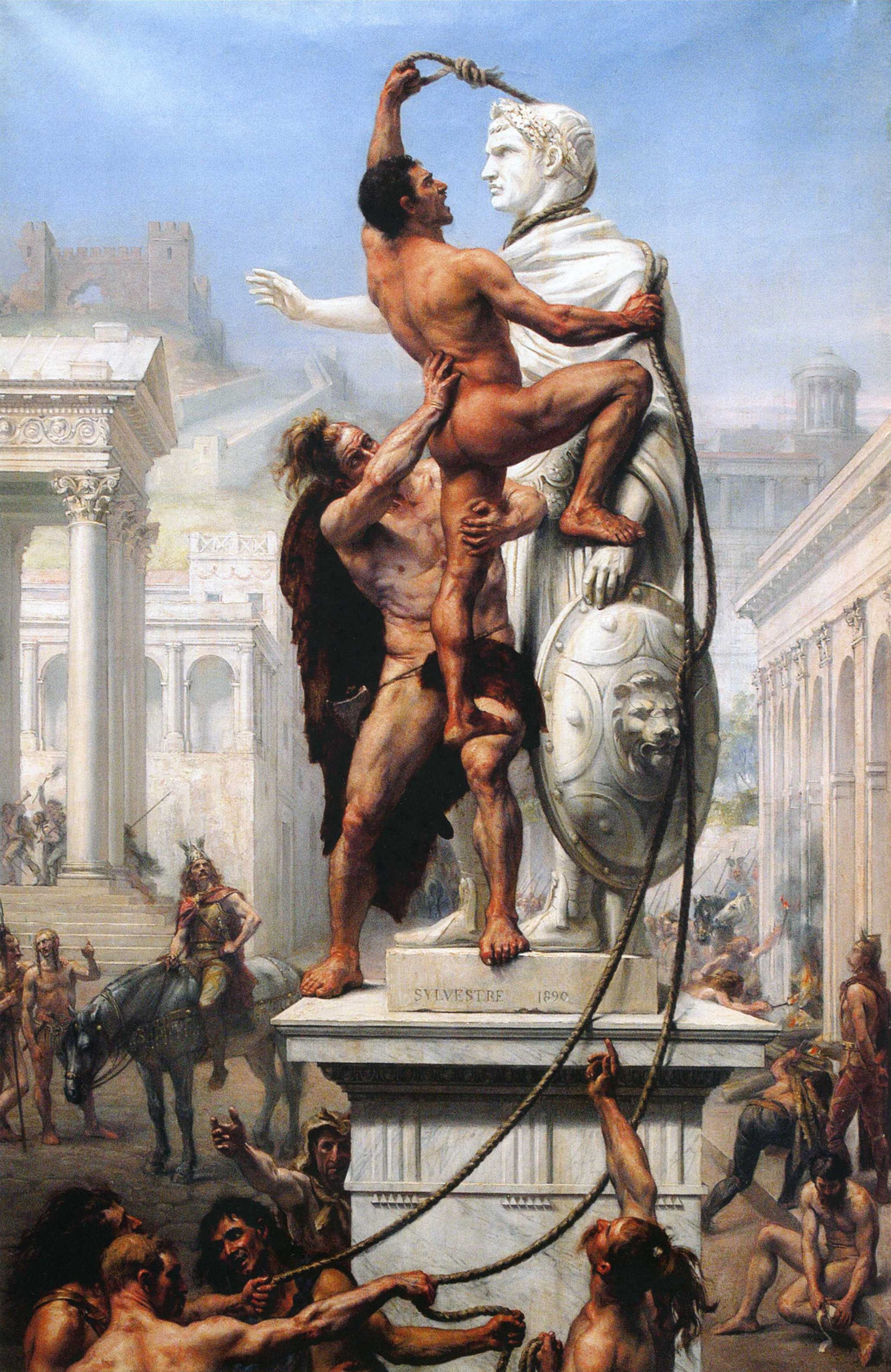Roman Military Uniform - Every soldier who goes into battle must be properly prepared. Over the centuries, the evolution of Roman military weapons has changed like a kaleidoscope. But in fact the Roman army gained importance because of Marius' reforms. With perfect training, he also needs excellent equipment, which together with talented soldiers creates an insurmountable obstacle.
A legionnaire from the beginning of the Republic is very different from his counterparts from, for example, the 2nd century AD. However, most of the changes are related to the quality of individual components, as well as the style of weapons. The main elements of armament are always:
Roman Military Uniform

Josephus Flavius wrote in the 1st century BC that all military commanders carry weapons: saws, baskets, barrels, axes, leather belts, iron bars, chains, and food that should last three days.
Roman Esque Soldier Uniform
Soldiers' belongings are in bags - cups, plates and food are carried on wooden bars
) was used, which was pulled with a special tool. Initially, they were only used by foreign soldiers, with Cretan archers and Balearic slingers leading the way. Later these weapons were used by auxiliary forces.
) was introduced, worn on the right leg, originally worn only by hastati and principes. During the Empire, the metal leg was replaced by leather or wool, up to half-calves. The legs are bound up to the ankles.
), a moon-shaped shovel placed on a pole, and a shovel for gathering grass. The Romans also had equipment to represent a grid of squares. It is called
Men At Arms Ser.: Roman Military Clothing (2)
. Thanks to this equipment, they can determine the plan of the camp, based on which they can build it very quickly. The device was found during excavations at Pompeii. Yes
To increase the flexibility of the army, as a result of Marius's reforms, soldiers were ordered to carry sacks (
During the 3rd and 4th centuries BC, the Roman units on the frontier underwent significant changes that changed the foundations and appearance of the Roman Imperial Army. The Roman army used more horses to meet and resist the many barbarian invasions. This is mainly due to the fact that the barbarians began to use cavalry extensively in their operations.

The presence of soldiers from outside Rome in the ranks of the army led to the extensive use of Eastern and German weapons, armor and fighting methods. It is worth mentioning here, among other things, about
Bes, Small God In Ancient Egypt, And Archaeological Collection; Allard Pierson Museum, Amsterdam
Borrowed from German - a spear used in the late Roman army, comparable to the Roman one
More effective at stabbing and anti-cavalry, but still with good properties, spear . Soldiers carried these two weapons.
However, it should be noted that the barbarians still used the Roman solution, so the transformation in the military did not take place in one direction.
The widespread use of cavalry meant that gladiators began to be replaced by long, straight, double-edged swords called
Sold Price: Gaius Julius Caesar In Roman Military Uniform Bronze Sculpture
Is sharpened to cause stab wounds, often used for cutting; Thanks to the longer blade, there are more opportunities to reach the rider's back. Yes
Is heavier than a gladius and is characterized by a trained and regular sword of medium length, a thick and straight handguard, and a lever that appears to be a reduced form of a crossguard. Unlike the gladius, it is mainly adapted for forming infantry under the cover of a large shield.
It is more suitable for riders and for fighting in a looser form (does not exclude a tight form, however).

Shield. Roman military defense began with round, oval, or rarely oval shields designed in the Germanic style. The shield weighs more than 3.5 kg. Among the armors, the most popular are chain mail and armor.
Roman Military Uniform Stock Photo
Interestingly, Vegetius (a late Roman writer) mentions in his De re militari that Roman soldiers abandoned all armor; However, this is an author's error or information suggesting that the Romans defined a special unit of light.
The Great Roman Civil War The War of the Second Victory The Battle of Ruspina and the Gallic War campaign of Thapsus in the east
If you like the content I collect on the website and share on social media channels, I appreciate your support.
Post A Comment:
0 comments so far,add yours